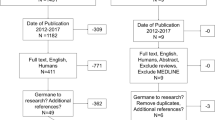Abstract
Because good information on deaths caused by a fall would be important for prevention policies, we analyzed the influence of coding differences on variability in state-level fall death rates in the elderly. We examined state differences in the number of cause of death codes on death certificates, death certifiers, completeness of E-coding, and indicators of specificity of coding. We found that state-specific fall mortality rates ranged from 13.9 to 140.4 in people aged 65 years and above. States employing a coroner to investigate injury deaths had 14 per cent fewer recorded fall deaths than those where a medical examiner conducted the investigations. Each unit increase in the median number of cause of death codes was associated with a 10 per cent increase in the number of falls. For each 1 per cent increase in the use of unspecified codes for the underlying cause of death, the number of falls dropped by 2 per cent. Current fall mortality data do not appear to identify all instances of falls. Variability in unintentional fall-related death rates among states may be partly explained by death certification coding practices. Standardization of coding and training for documentation of fall events and death certificate reporting could help uncover the actual fall mortality burden in the elderly.

Similar content being viewed by others
References and Notes
Smith, G.S., Langlois, J.A. and Rockett, I.R. (1995) International comparisons of injury mortality: Hypothesis generation, ecological studies, and some data problems. Proceedings of the International Collaborative Effort on Injury State, http://www.cdc.gov/nchs/data/ice/ice95v1/c13.pdf, accessed 6 August 2009.
Centers for Disease Control and Prevention. Falls among older adults: An overview, National Centers for Injury Prevention and Control, Division of Unintentional Injury Prevention Website, http://www.cdc.gov/HomeandRecreationalSafety/Falls/adultfalls.html, Published 2009. Updated 2009, accessed 16 June 2009.
Hu, G. and Baker, S.P. (2010) Recent increases in fatal and non-fatal injury among people aged 65 years and over in the USA. Injury Prevention 16 (1): 26–30.
Centers for Disease Control and Prevention. Web-based injury statistics query and reporting system (WISQARS) injury mortality reports, 1999–2007, National Centers for Injury Prevention and Control Website, http://webappa.cdc.gov/sasweb/ncipc/mortrate10_sy.html, Updated 2010, accessed 16 March 2010.
Centers for Disease Control and Prevention. Web-based injury statistics query and reporting system (WISQARS), National Centers for Injury Prevention and Control Website, http://www.cdc.gov/ncipc/wisqars, Published 2005. Updated 2010, accessed 29 December 2010.
Stevens, J.A., Thomas, K.E. and Sogolow, E.D. (2007) Seasonal patterns of fatal and nonfatal falls among older adults in the U.S. Accident Analysis and Prevention 39 (6): 1239–1244.
Langlois, J.A., Smith, G.S., Baker, S.P. and Langley, J.D. (1995) International comparisons of injury mortality in the elderly: Issues and differences between New Zealand and the United States. International Journal of Epidemiology 24 (1): 136–143.
Koehler, S.A. et al (2006) Accurately assessing elderly fall deaths using hospital discharge and vital statistics data. American Journal of Forensic Medicine & Pathology 27 (1): 30–35.
CDC WONDER multiple cause mortality. (1999) Centers for disease control and prevention. Website, http://wonder.cdc.gov/wonder/sci_data/mort/mcmort/type_txt/mcmort99.asp, Published 1999. Updated 2007, accessed 20 February 2011.
Bergen, G., Chen, L.H., Warner, M. and Fingerhut, L.A. (2008) Injury in the United States: 2007 chartbook, 151–152, http://www.cdc.gov/nchs/data/misc/injury2007.pdf, accessed 16 February 2012.
CDC WONDER compressed mortality file 1999–2006. (2010) Center for disease control and prevention, national center for health statistics. Website, http://wonder.cdc.gov/cmf-icd10.html, accessed 16 March 2010.
Barrett, M., Steiner, C. and Coben, J. (2004) Healthcare cost and utilization project (HCUP) E code evaluation report. HCUP Method Series 2004–2006: 1–7, http://www.hcup-us.ahrq.gov/reports/methods/2004_6.pdf, accessed 20 February 2011.
Barrett, M. and Steiner, C. (2010) Addendum to healthcare cost and utilization project (HCUP) E code evaluation report. HCUP Method Series 2004–2006: 1, http://www.hcup-us.ahrq.gov/reports/methods/2004_06Addendum.pdf, accessed 20 February 2011.
Hanzlick, R. and Combs, D. (1998) Medical examiner and coroner systems: History and trends. JAMA 279 (11): 870–874.
Combs, D.L., Parrish, R.G., Ing, R., Lin, B.K., Paris, A. and Groseclose, S.L. (2010) Death investigation system descriptions for each U.S. state and territory and each Canadian province including contact names. Medical Examiner and Coroner Information Sharing Program, Website, http://www.cdc.gov/ncphi/od/AI/mecisp/death_investigation.htm, Updated 2006, accessed 6 August 2010.
Centers for Disease Control and Prevention. Behavioral risk factor surveillance system, Office of Surveillance, Epidemiology, and Laboratory Services Website, http://www.cdc.gov/brfss/, Updated 2011, accessed 20 February 2011.
Normal mean daily temperature, degree Fahrenheit. National Oceanic and Atmospheric Administration Satellite and Information Service, National Climatic Data Center Website, http://www.ncdc.noaa.gov/oa/climate/online/ccd/meantemp.html, Updated 2008, accessed 6 August 2010.
Average latitude and longitude for US states. MaxMind Website, http://www.maxmind.com/app/state_latlon, Published 2010. Updated 2010, accessed 6 August 2010.
Campos-Outcalt, D. (2005) Cause-of-death certification – not as easy as it seems. Journal of Family Practice 54 (2): 134–138.
Rubenstein, L.Z. (1997) Preventing falls in the nursing home. JAMA 278 (7): 595–596.
Centers for Disease Control and Prevention. Falls in nursing homes, Department of Health and Human Services Website, http://www.cdc.gov/ncipc/factsheets/nursing.htm, Updated 2009, accessed 1 August 2009.
Hill-Westmoreland, E.E. and Gruber-Baldini, A.L. (2005) Falls documentation in nursing homes: Agreement between the minimum data set and chart abstractions of medical and nursing documentation. Journal of American Geriatric Society 53 (2): 268–273.
Betz, M.E., Kelly, S.P. and Fisher, J. (2008) Death certificate inaccuracy and underreporting of injury in elderly people. Journal of American Geriatric Society 56 (12): 2267–2272.
Author information
Authors and Affiliations
Additional information
Because good information on deaths caused by falls would be important for prevention policies, the authors try to explain vast differences between states in the United States.
Rights and permissions
About this article
Cite this article
Maresh, J., Guse, C. & Layde, P. National trends and coding patterns in fall-related mortality among the elderly in the United States. J Public Health Pol 33, 202–214 (2012). https://doi.org/10.1057/jphp.2012.6
Published:
Issue Date:
DOI: https://doi.org/10.1057/jphp.2012.6




